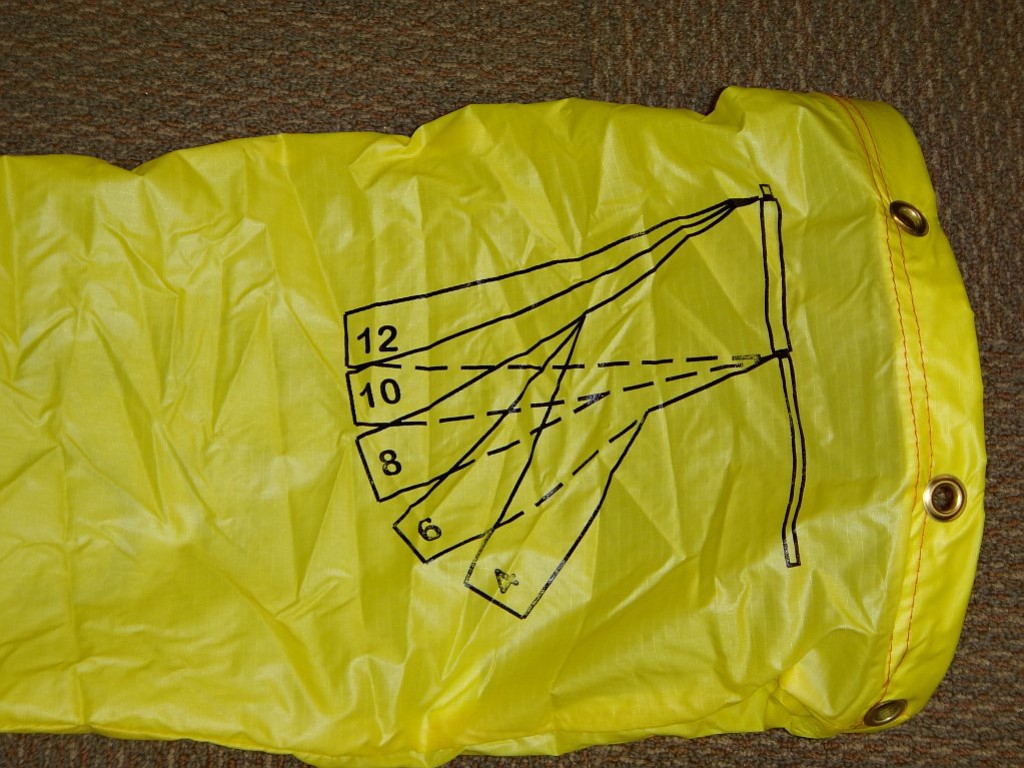PORTLAND — A few feet of yellow fabric may represent the next frontier in reducing pesticides in the Clackamas River.
The Clackamas County Soil and Water Conservation District is rounding up farmers to attach windsocks to their tractors so they can make better decisions about when and where to spray pesticides. The socks are calibrated to indicate wind speed from 2 to 12 miles per hour — the faster the wind speed, the higher the sock flies.
The idea is that as a tractor nears the end of a row, the driver can look at the windsock attached to the spraying beam above his head and judge if the wind is blowing too hard or in the wrong direction based on where he wants to spray next.
The windsocks are the first step in an effort to bring growers and water-quality experts together to protect a river that provides drinking water for 400,000 people.
Few of the pesticides used in Oregon agriculture have water-quality standards written into law. The process to create Environmental Protection Agency standards for a single pesticide is lengthy, requiring rounds of testing, public input and debate.
One that does have a legal standard is chlorpyrifos, a Dow Chemical Company-created insecticide known as Lorsban. Chlorpyrifos consistently shows up in at least one Clackamas River testing site, often in dangerous amounts.
In the case of chlorpyrifos, the EPA can invoke the Clean Water Act and ask the Oregon Department of Environmental Quality to limit amounts of the pesticide to the various agricultural stakeholders — farmers are allowed to use a certain percentage of the chemical, foresters are allowed a certain percentage and so on.
Scientists are just as concerned about the pesticides without legal standards, though, because so little is known about how much of one of those is too much.
So, Kevin Masterson of DEQ is working with conservation and agriculture groups to avoid the EPA process and solve the problem voluntarily.
“We think if we focus intensively on those highest priorities, we can get results quicker than relying on the Clean Water Act approach,” Masterson said.
The EPA provides mathematical formulas for agencies to create their own benchmarks for pesticides. The benchmarks don’t carry legal weight, but are a guidepost for local water- and soil-quality watchdogs to modify behavior.
In 2000, agricultural and conservation stakeholders in the Hood River area approached DEQ to voluntarily bring down pesticides in the river, according to the benchmarks. Masterson said they had success bringing growers, water stewards and regulators together to tackle the problem.
“People liked the whole idea that you’re using data and you’re looking at environmental outcomes, but you’re doing it in a collaborative fashion,” Masterson said.
However, the Hood River area’s agriculture is focused on a few crops, whereas the Clackamas River runs through a diversity of agricultural uses.
The new effort will ultimately expand to include a program to help farmers replace old sprayer nozzles, and other ideas that are affordable for farmers to implement and are mutually beneficial for conservationists.
Lisa Kilders of the Clackamas County Soil and Water Conservation District hatched the idea of the windsocks and nozzle replacements after a presentation on wind-drift research. The low-tech pilot program seemed like an easy sell to sprayers.
Oregon winds move enough pesticide off crops into the streams that farmers end up having to spray more frequently, using up their supply of costly chemicals. The supposed pay-off of the windsocks is that farmers would save money and time.
“What they want to do is use the pesticides as efficiently and effectively as possible, because they’re expensive,” Kilders said.
Paul Jepson of the Oregon State University Integrated Plant Protection Center will eventually survey the people who use the pilot-program windsocks. If the program is successful, they will make adjustments and continue.
“We don’t know what difference it’ll make, but drift is a problem in our state,” said Jepson, who has studied wind-drift since the 1990s. “Lots of growers are pretty careful already. They probably do this. It’s kind of a reminder that weather’s really important.””



